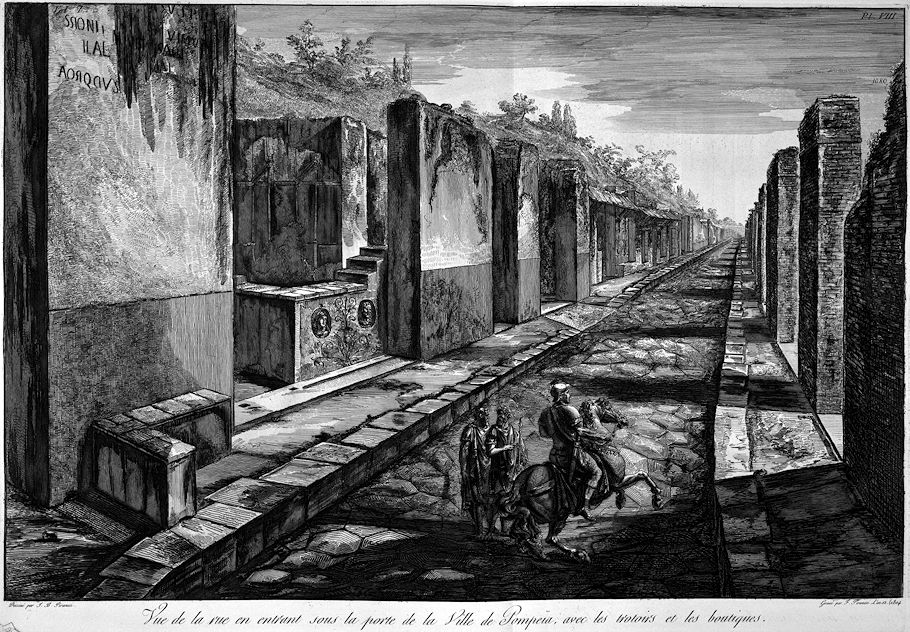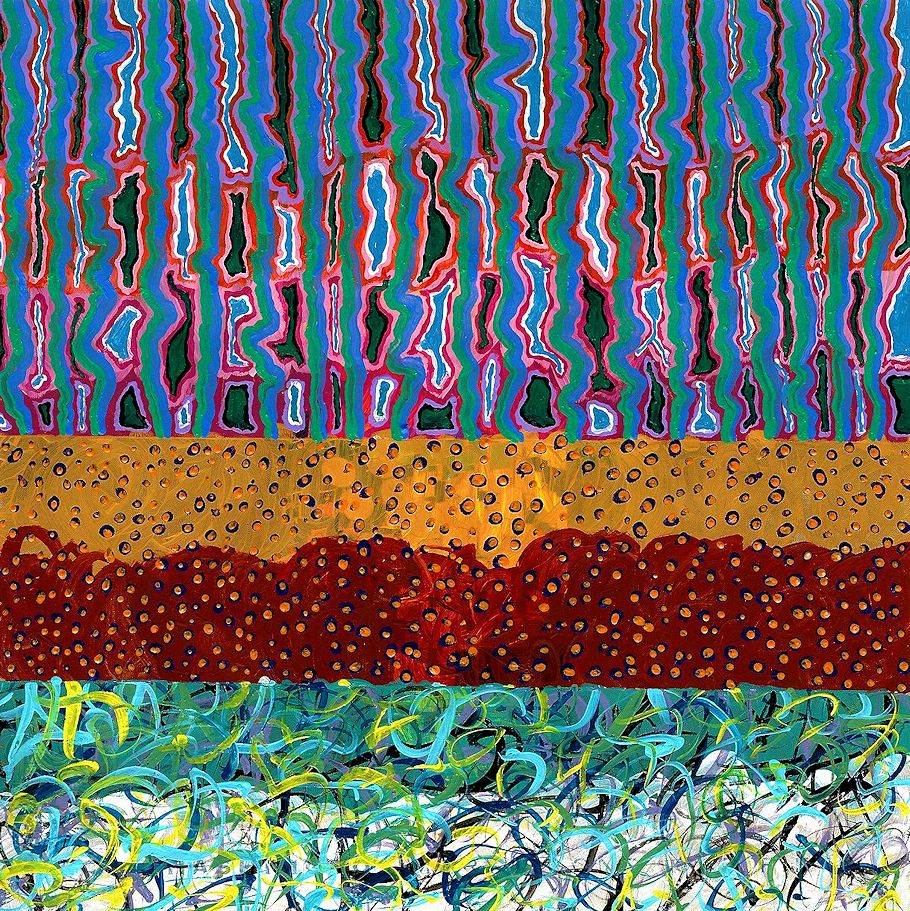6 July 1778 Monday
. . . . . .
Artifacts of the Bianconi vs Piranesi 'Circus of Caracalla' affair 1772-1789
. . . . . .
46 y.o. Francesco Piranesi 1804
Le Antichità della Magna Grecia Parte I

View of the street entering under the gate of the City of Pompeii, with the sidewalks and the shops.
Drawn by G.B. Piranesi
Engraved by F. Piranesi Year 12 (1804)
6 July 1812 Monday

Sun rose clear clouds from W soon covered the firmament. Air very light, temperature 76. Mary and the children left us at half past 7. Lydia went with them to return with Hannah in the evening. Air extremely unelastic, commonly called close. A slight wind from N has carried their clouds to leeward having a hot sun shining through a clear air. Temperature at noon 88°--at 3 PM 93°. I finished reading Volney’s book and find more information in it than I expected. There are some good notes by the translator C.B. Brown, son of Elijah Brown, one of our company in 1777 to Winchester. I read Volney’s Ruins of Empires some years ago and was so prejudiced against him by his bold infidelity, as to have no desire to become acquainted with him when he waited on me accompanied by John Swanwich, a man whose name will fall into oblivion, but was famous as the friend of Robert Morris, Esq., a man of a great mind whose genius of finance retrieved the credit of the United States after their system of paper money was worn out in 1780. He was the leading member of the legislature of Pennsylvania in 1780-1 and under his influence the Act of 21 June 1781 repealed all the laws of Pennsylvania making paper money a legal tender in the discharge of debts was passed; I drew all the Law, but the Preamble; Swanwich was then RM's deputy of Finances, but was not able to keep up his credits; he sunk sometime after, under the too severe satire of William Colbut[?], author of the works under the name of Peter Porcupine. Robert Morris continued in flourishing circumstances many years after, but having grasped after too much, lost all and sunk into obscurity; his name, however, was so connected with the prosperity introduced by Washington and Hamilton that it will revive with the resuscitation of their and partake in their Honors.
To return to Volney’s work I have derived much instruction from it--the opinion I have given in former notes on the weather contained in preceding almanacs are in general confirmed and I shall hereafter with candor acknowledge any change in my sentiment in meteorology occasioned by reading this work; but I believe it will not consist in differences of principle but, merely the application of some of his facts, before unknown to me in support of my theory, or of a slight variation from it.
The weather this afternoon is very close. Wind had drawn to SW. Thunder clouds are gathering around the horizon and it is uncertain from what quarter a heavy gust may arise after a phlogiston discharge of the serviceable heat of the atmosphere. Temperature at 5 96°, this is not so high as about this time last year, but higher than ever observed my me in former years. Temperature in the same situation was on 6 July last year at 4 PM 102°. S. & S.L. came out this evening and brought the paper. There is no account of any battle at sea as rumored for some days past.
6 July 1996
Timepiece
... a tone that is aggressive and also elusive. ...the best characteristics of the chronosomatic theory, like the prevalence of duality and the rarity of singularity, the transition from the profane to the sacred, the origin of life and sex and the sense of touch, the evolutional stages of the human imagination. ...this is only a portion of the ideas that the body generates when it is used as a 'space-time' calendar.
6 July 2020

Mary Boone's 180 hours of community service hours 129 130 131
6 July 2023 Thursday
[unedited]
Bianconi was one of the authors that Piranesi used to write his texts.
That's jumping the gun, but, yes, in the "Elogio storico del cavaliere Giovanni Battista Piranesi," Bianconi is talking about himself (and perhaps others) when he accuses Piranesi himself of not having written his published texts.
Bianconi's Descrizione dei circhi, particolarmente di quello di Caracalla e dei giochi in esso celebrati is precisely what Piranesi would have wanted his Ancient Circuses volume of 'text and explanation' to have been.
I doubt very much I'll ever auto-translate all of Bianconi's and Fea's 'Circus of Caracalla' work, which means I also will not have read all of the work. Nevertheless, I'm confident that it is, most probably, a complete compilation of all the historical/available knowledge regarding all of ancient Rome's circuses. Like I wrote above, we have in Bianconi's 'Circus of Caracalla' exactly the 'text and explanation' Piranesi would have published (under his own name).
So, did Bianconi and Piranesi, already in 1772, talk together about jointly working on and publishing Ancient Circuses? And, furthermore, did things already go sour by 1775?
One of the things that got me thinking along these lines is that Bianconi knew so much about Piranesi--the "Elogio storico del cavaliere Giovanni Battista Piranesi" and Descrizione dei circhi, particolarmente di quello di Caracalla e dei giochi in esso celebrati prove that--and it started making sense that Bianconi and Piranesi actually had, at sometime from 1764-1775, a close, friendly, and even professional relationship.
Now let's also remember that Bianconi was a bona fide, reputable physician.
Bianconi's Doctoring Piranesi--now there's my very own blockbuster dark comedy franchise.
|